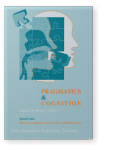The three-dot sign in language contact
In this study, we investigate the three-dot sign as a discourse marker (DM) with textual, subjective and intersubjective discourse functions. As a graphical marker that is used across languages, the three-dot sign is especially suitable for comparative studies and dynamics in language contact. Our corpus study targeting instant messages of different languages (English, German, Greek, Russian, Turkish) and speaker groups (monolinguals and bilingual heritage speakers) suggests that graphical DMs are prone to cross-linguistic influence. This depends on the specific contact situation and does not seem to be a general effect of bilingualism. The societal status of a language might further influence the use of such markers in digital informal writing. Language-specific developments that relate to emerging functions indicate that functional versatility promotes frequent use of (graphical) DMs.
Article outline
- 1.Introduction
- 2.Literature review and research questions
- 2.1The three-dot sign as a graphic discourse marker
- 2.2Textual discourse functions
- 2.3Subjective discourse functions
- 2.4Intersubjective discourse functions
- 2.5This study: A cross-linguistic perspective on the three-dot sign
- 3.Method
- 3.1The database
- 3.2Positions, context, and functions
- 3.2.1Positions
- 3.2.2Context: Discourse units
- 3.2.3Derivation and systematization of functions
- 4.Results
- 4.1Overall and individual use of the three-dot sign
- 4.2Functions across languages
- 4.3Tendencies in contact situations
- 5.Conclusion
- Notes
-
References
